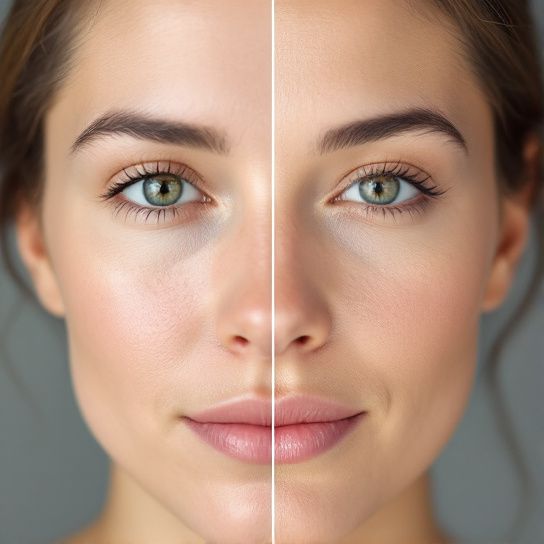Ever feel like the years are flying by and wonder if there’s a tech-savvy way to catch up? Let’s chat about something that’s kind of blowing my mind right now—frequency tools. You know, those devices and gadgets that claim to turn back the clock on aging way better than any miracle cream or creme brûlée you’ve ever obsessed over at dessert time. Might sound like sci-fi, but trust me, this tech therapy is catching on.
The Search for Youthful Skin: Why Frequency Tools?
So, here’s the deal. We’re all looking for ways to get our skin to chill out and stop throwing tantrums in the form of wrinkles and sagging. All those creams piling up in your bathroom corner might not cut it alone. What’s been quietly revolutionizing the skincare world? Technology! Enter frequency tools—ingenious devices using clever tech like radiofrequency and ultrasound to work their magic below the skin’s surface. And let me spill the beans: it isn’t just puffery.
Why Frequency Tools Are Gaining Popularity
Okay, imagine waving a wand over your skin and making it glow. Not Hogwarts style, but close. Frequency tools utilize non-invasive methods to achieve what once took a needle. This whole tech therapy thing isn’t about stopping the aging process but managing it intelligently. It’s skin stimulation at its finest without the “ick” factor of surgeries. Plus, you get the comfort of your couch while these gizmos transform you into a younger-looking you. Game-changer, right?
Now, hang out with me as I dive into how these frequency tools operate, the benefits, and a few dos and don’ts. We got lots to unravel, and if you’re someone who’s skeptical or curious—or a delightful combo of both—keep reading. This topic does a great job keeping you on the edge with its possibilities.
How Frequency Tools Actually Work
Alright, let’s go a tad technical without trying to sound like a science textbook. Basically, frequency tools use energy waves to heat the deeper layers of your skin. This heat process stimulates collagen production. And collagen? It’s your skin’s BFF, giving it that firm, youthful bounce. When collagen gets cozy in your skin, it’s smoother sailing towards reduced lines and plumpness. Through consistent tech therapy sessions using frequency tools, we’re essentially encouraging the skin to help itself. Think coaching rather than commanding.
There are mainly two types often talked about:

- Radiofrequency (RF) Tools: These are like the wise elders of frequency therapy, having been used in treatments for eons (well, decades—they’re not exactly ancient). They target the deep skin tissues, promoting tightening and contouring, perfect for those jowels that defy gravity.
- Ultrasound Tools: Envisage these as the slightly hyper kid, zooming in with precision. They go deeper into the skin layers, with seriously focused energy helping to tone and lift saggy areas. Plus, they enhance blood circulation—a win-win if you ask me.
Tackling Anti-Aging with Tech Therapy: The Proven Benefits
Let’s face it, who doesn’t get a kick out of adoring their reflection after a fab skincare session? The key benefits of using frequency tools stretch beyond just physical rejuvenation; they help boost confidence too. Let’s break this down.
1. Non-Invasive Beauty Boost
Forget the “no pain, no gain” nonsense. With frequency tools, it’s more like “less ouch, more wow.” The convenience and minimal downtime mean more beauty sessions you can fit in during that Netflix binge.
2. Long-Lasting Effects
Unlike that mascara meltdown, the effects of these tools don’t wash away. The structural improvements, sparked by collagen and elastin production, offer longer-term benefits, gradually transforming your skin landscape over repeat sessions.
3. Ease of Use and Convenience
Okay, this one’s a personal fave. Frequency tools—particularly the at-home versions—are user-friendly. They’ve got your back (or face) when salon trips are off the cards. Just charge it, zap it, love it.
4. Customizable and Compact
Investing in these tools doesn’t mean banking on one-trick ponies. Many frequency tools come with settings that accommodate your unique skin needs like a tech-savvy massage therapist.

How to Skillfully Integrate Frequency Tools into Tech Therapy
But what good’s all this info without actionable steps, right? Let’s explore a roadmap for integrating frequency tools into your skincare ritual. Consider this your cheat sheet for maintaining that youthful allure.
Step 1: Understanding Your Needs
First-time user, or looking for a deeper therapy dive? Know your skin type and tolerances. Sensitive skin might want gentler tools, whereas supple and resilient skin could take a more intense journey.
Step 2: Research Products Carefully
Pro tip: Not every gadget flashing as “the next big anti-aging device” meets quality standards. Look for reputable, tested brands and user reviews. You don’t want to end up with a cheap gizmo that fizzles out quicker than it’s powered up.
Step 3: Establish a Regular Routine
Consistency makes those magic mirrors beam back a fresher version of you daily. Start with shorter stints (10–15 minutes) twice or thrice a week. It’s like watering a plant; results bloom with time.
Step 4: Monitor the Results
Keep track of changes. Be pattern-aware. If discomfort or irritation occurs, reassess the tool’s settings or prod yourself gently into consulting a dermatologist.
Step 5: Complement with Skincare

Frequently combined technology with your existing regimen maximizes outcomes. Use nourishing serums post-session to lock in the benefits pathogen-free skin layers have tenderly paved. You want synergy here, not a solo act.
Dos and Don’ts of Frequency Tool Usage: What to Keep in Mind
You know how in a conversation something suddenly sparks a great life lesson? Let’s do that for frequency tools. Consider these as reminders, tidbits of wisdom straight from the trenches of future-you:
Do:
- Give Rest Days: Your skin squad needs downtime. Regularity is golden, but overdoing twists relaxation towards counteractivity.
- Stay Hydrated: Drink water like you mean it. Fluid intake aids detox, an intrinsic healing amazed.
- Undertake Risk Assessment: If prone to conditions akin to rosacea, consult a specialist before deployment.
Don’t:
- Skip Patch Testing: Important for minimizing adverse unexpected discos.
- Ignore Sensations: If it tingles or stings notably, stop or seek medical counsel.
- Use Randomly: Aim for strategic timing; morning rituals bring radiance but squaring off to bedtime builds repair in cellular beauty slumber.
Wrapping Up: A Glance at the Future of Anti-Aging Frequency Tools
So here we are, standing at the edge of technology’s shimmering pool. Frequency tools are allies in aging with grace and vibrancy. Yes, they puff their chest revealing science-backed, progressive solutions for skincare formerly considered impossible.
Leap beyond beauty barriers. The growth bubbling around home-tech, current innovations make tech therapy enviable and accessible. Next time you ponder peptides, pause to muse over the roadmap these frequency tools lay for reflecting genuine mirrors—fresh faces unshielded by decades racked and stacked over the calendar year counterpath.
If maintaining skin health and looking rejuvenated hovers mysteriously around your thoughts, now’s the synch hour. Piece together your tech-inspired skincare adventure using the frequencies leading with brilliance beyond appearances—aesthetic and mind fully intertwined.
Now, how about uncorking that gratitude bottle watching ahead, purity quenched by wisdom-rich frequency gains? You’ve kept tuned. Until we compare frequencies again—I can’t wait!
Frequently Asked Questions
What is a frequency counter, and how does it work?
A frequency counter is an electronic instrument used to measure the frequency of a periodic electronic signal. It works by counting the number of cycles or pulses of the signal within a specific time period, known as the gate time, and then displaying the result in hertz. The counter uses a precision timebase, often a quartz crystal oscillator, to ensure accurate measurements[1][5>.
What types of measurements can a time and frequency analyzer perform?
A time and frequency analyzer is a versatile instrument that can measure time intervals between events, count the number of these events, and calculate instantaneous frequency and deviation of a signal. It is used for oscillator characterization, jitter analysis, phase noise analysis, and other specialized applications like photon counting and LiDAR measurements[3>.
How accurate are frequency counters, and what affects their accuracy?
The accuracy of a frequency counter is highly dependent on the stability of its timebase. Factors such as movement, interference, and drift due to age can affect the timebase, leading to inaccuracies. High-accuracy measurements often use external frequency references tied to very stable oscillators, such as GPS disciplined rubidium oscillators. Techniques like oversampling and averaging can also improve resolution and accuracy[1][5>.
What are the common interfaces and control methods for frequency counters?
Frequency counters often include various I/O interfaces such as RS-232, USB, GPIB, and Ethernet. These interfaces allow users to send and receive information, control the instrument, and receive notifications when measurement limits are exceeded. Modern frequency counters may also use SCPI commands and LAN-based control with GUIs for easier operation[1>.
References- Wikipedia. Frequency Counter.
- Liquid Instruments. What is a Time and Frequency Analyzer?.
- Wikipedia. Frequency.



